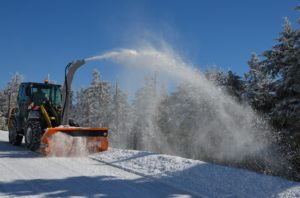 Winter brings a host of challenges to road safety, with icy and slick conditions demanding a strategic and cautious approach from drivers. A crucial aspect of safe winter driving is vehicle preparedness. Invest in high-quality winter tires designed to provide optimal traction on slippery surfaces. Regularly check tire pressure and tread depth, ensuring they meet recommended standards for enhanced grip. Equipping your vehicle with winter essentials, such as antifreeze and windshield washer fluid, is crucial to prevent freezing and maintain clear visibility. Before setting out, clear all windows, mirrors, and lights of ice and snow, and replace worn-out windshield wipers to ensure unobstructed visibility.
Winter brings a host of challenges to road safety, with icy and slick conditions demanding a strategic and cautious approach from drivers. A crucial aspect of safe winter driving is vehicle preparedness. Invest in high-quality winter tires designed to provide optimal traction on slippery surfaces. Regularly check tire pressure and tread depth, ensuring they meet recommended standards for enhanced grip. Equipping your vehicle with winter essentials, such as antifreeze and windshield washer fluid, is crucial to prevent freezing and maintain clear visibility. Before setting out, clear all windows, mirrors, and lights of ice and snow, and replace worn-out windshield wipers to ensure unobstructed visibility.
Slow down on Slick Roads
Adapting your driving behavior to winter conditions is fundamental for safe travel. The cardinal rule is to slow down. Reduced speeds not only enhance control but also increase reaction time, reducing the risk of accidents. Increase your following distance to accommodate longer braking distances on icy surfaces. Employ smooth and gradual movements when accelerating, braking, and steering to avoid skidding. Sudden actions can lead to a loss of control, emphasizing the importance of maintaining a gentle touch on the controls. If your vehicle starts to skid, steer in the direction you want to go and apply the brakes gently to regain stability. It’s crucial to stay calm; panic can impede decision-making in critical situations.
Knowing the Weather you are Driving into
Staying informed about weather conditions is paramount for safe winter driving. Before embarking on your journey, check local weather forecasts and road reports to anticipate potential challenges. If the weather is severe, consider delaying your trip or opting for alternative routes with better conditions. Exercise extra caution on bridges, overpasses, and shaded areas, as these locations tend to freeze first. Communication is key, so inform someone about your travel plans and ensure your mobile phone is charged for emergencies. By combining vehicle preparedness, cautious driving practices, and proactive planning, drivers can confidently navigate slick winter roads, reducing the likelihood of accidents and ensuring a safer winter driving experience for themselves and fellow road users.
Recent Comments